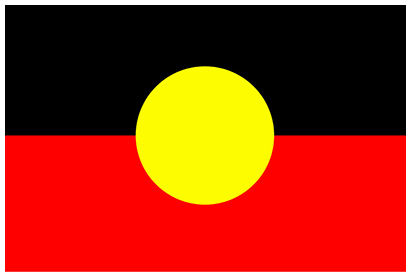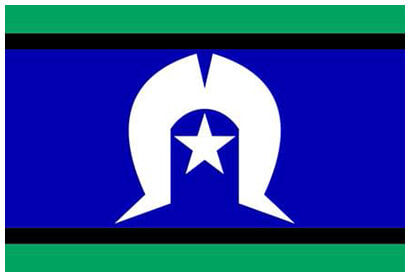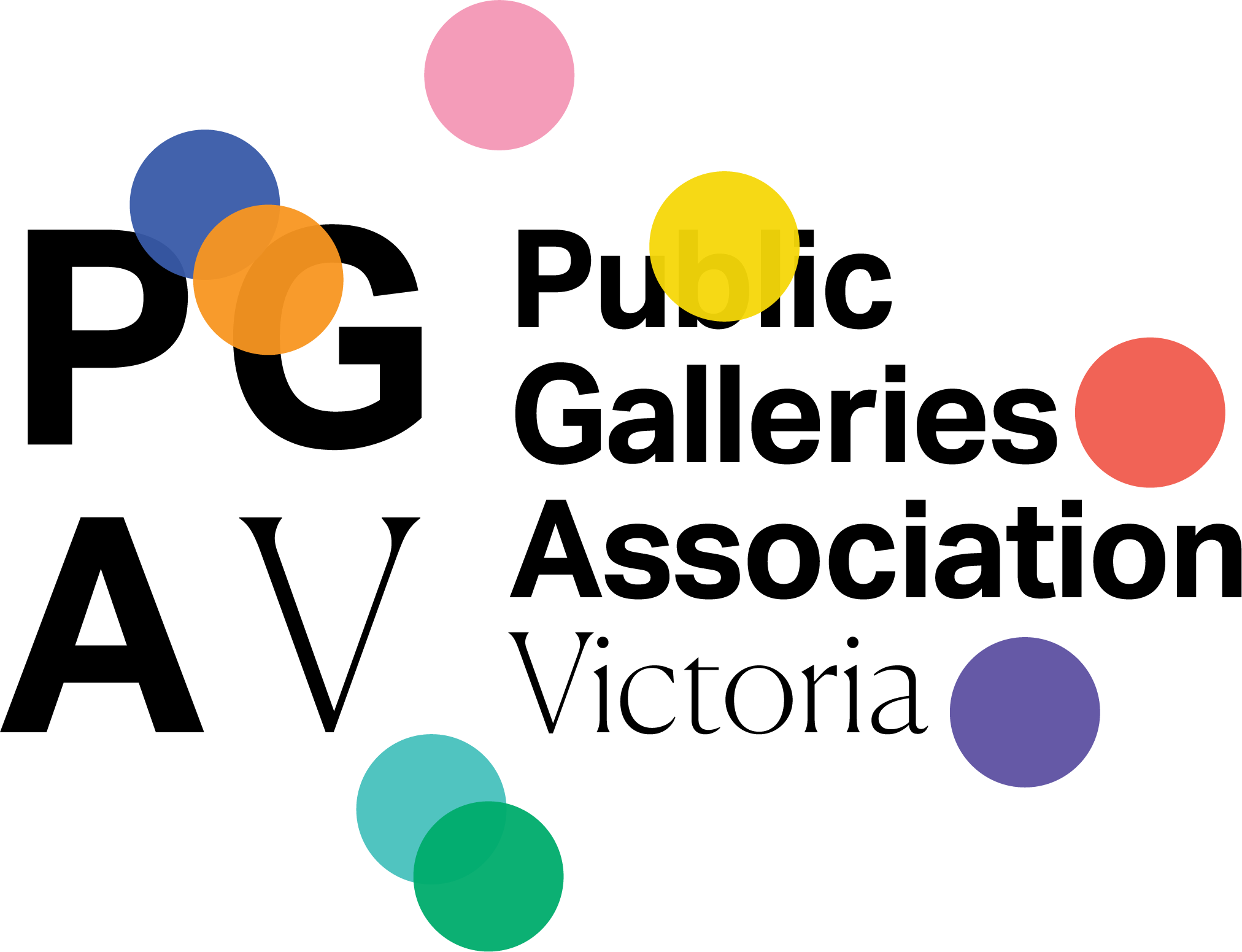first nations curator
Professions in the Public Gallery Sector

gail harradine
Curatorial Manager
Koorie Heritage Trust
Photo by Christian Capurro.
Date: July 2022
the role of first nations curator
Senior Curator: The Senior Curator leads the programming of the gallery, which incorporates diverse artistic styles and
perspectives. They support the development and reporting of the annual budget, initiate ideas for public events and oversee the design, interpretation and logistics of exhibitions. They lead the development of an art collection and systems and procedures for collection management. They are generally responsible for managing at least one member of staff.
For information about roles within public galleries see the PGAV Fact Sheet: Staffing Levels & Position Titles
How did you get started in your career and what formal qualifications or experience do you have?
I grew up closely entwined within Wotjobaluk/Djubagalk/Jadawadjali family and country, in the Wimmera region of Victoria. Our family (the Old People), going back to my great great grandparents, Pelham and Blanche Cameron, were very strong. They survived forced relocation to Ebenezer Mission (1859-1904) near Antwerp, in the early days, and kept their knowledge of creation, and country. Pelham was well known for his bark canoe demonstrations before the local Regattas and his cultural knowledge. The backbone of country is the Wimmera river, a stunning place to grow up and explore, and the pathway of major Creation stories of the Tchingal (Giant Emu) and Purra the Kangaroo journey. I am also very grateful to work on the lands of the Kulin nations, and Naarm.
My schooling was not very inspiring, with only a few Indigenous books in the library at school and feeling that there was no interest in my cultural background. At the same time, I was very conscious that I come from a matriarchal line of strong First Peoples women and I battled through. I was encouraged to study by my parents, who did not get the opportunity to finish their schooling, or to extend themselves in terms of careers. My dad celebrated his 21st as a Private in Darwin, during WWII, not a citizen but definitely well respected for his war efforts. When us kids came along, he instilled us with strong cultural values, work ethics and a quiet determination, whilst having empathy for all people and communities.
At a crucial stage of my study, I again, had the perfect person to keep me thinking of my career path, and I refer to the late Lisa Bellear, Aboriginal Liaison Officer at Melbourne University in the 1990s and a highly regarded artist/poet/photographer/Warrior woman in her own right. With her direct intervention (as I was told I could not apply to the department to study as I was unable to pay the upfront fee), myself and another Indigenous student, were able to access the Fine Art Department at Melbourne Uni in the Postgraduate in Art Curatorial Studies in the 1990s. Previously, I was also one of the first Indigenous students at Ballarat University so it was a different world to what it is now. We had no pathways to access and succeed back then, apart from making our own pathways, so Uni was a huge influence on me as there were other First Peoples students that were so supportive and from all over Australia. Many of us still keep in touch today. It is also highly significant to me, that I help to care for the late Lisa Bellear’s stunning collection of photographic images and collages housed in the KHT collection, and to see community mob connect with her powerful photos.
I successfully completed my thesis on Aboriginal art in the Melbourne area with my Postgraduate Studies and was fortunate to receive an Aboriginal cadetship and went on to work at the National Museum of Australia (Canberra) in the Gallery of Aboriginal Australia, Museum Victoria, Gasworks and the Koorie Heritage Trust. I also was involved with exhibitions at Festivals with other First Peoples/creatives to hone my curatorial skills.
I feel that the late Aunty Iris Lovett-Gardiner also inspired me to keep studying. She used to visit us in the late 1990s when the KHT was in Flinders Lane, and was a huge influence on me. She studied her Masters in her 70’s with her lovely book published by the KHT, Lady of the Lake: Aunty Iris’s Story, and I feel that I would not have had the confidence to continue my studies over the years without hugely influential Elders such as Aunty.
Qualifications: Diploma of Fine Art (Ballarat University), Graduate Diploma in Secondary Education (Melbourne University), Postgraduate in Art Curatorial Studies (Melbourne University), Graduate Diploma in Natural and Cultural Resource Management (Deakin University) and currently finishing my second and final semester of Masters in Arts (Arts Management), RMIT. I have also completed short courses in management such as Working to Influence (Dept of Education) and Cert IV Training and Assessment.
What does your role as Curatorial Manager encompass?
This is my second occasion in a curatorial role at the Koorie Heritage Trust (KHT). In work roles regionally and in Melbourne, I have worked in Cultural Heritage management, Aboriginal Justice/Corrections, Aboriginal Health, University lecturing in Aboriginal history/health, teaching in schools, all based around my huge interest in First Peoples art, culture and wellbeing. Being a First Peoples woman, it is not easy in regional areas to find work long term. It is special to come full circle and be ensconced as Curatorial Manager at the Koorie Heritage Trust but it was a lot of commuting at first in-between country and city. My family are very patient with me.
The role involves implementing regular changeovers of exhibitions, and researching how best to highlight stories and art of First Peoples in Victoria.
The role also has a dynamic public programs element and overseeing the care and management of a unique collection of artworks, cultural belongings, oral histories, photographic archives and Reference library. The Curatorial and Collections team includes the Collections Co-ordinator, Curator, two Assistant Curators, Public Programs Co-ordinator and Blak Design Co-ordinator that focuses on four years of First Peoples design including Jewellery and Ceramics in partnership with RMIT and NGV (and Fed Square).
Our values of Respect, Honesty, Reciprocity and Curiosity meet our stated vision and mission to support and celebrate the continuing journey of First Peoples of South Eastern Australia. We are a unique centre in Australia dedicated to Koorie Art and culture of South Eastern Australia and this provides a tangible link to connect the Koorie community to such a powerful collection.
It is amazing to support ideas and aspirations in exhibition formats, narrative and linkages between the artist’s practice and individual works. In the Curatorial and Collections team, we strive to represent the artist/s in a way that grows out of initial discussions and translating these to a design layout, connecting back to the objectives of the exhibition brief. We work to a timeline and budget to enhance the artist’s storytelling and artistic direction. We often brainstorm ideas and bring them back to the team to refine and develop in direct consultation with the creative practitioners from the very start of the concepts. We also like to be flexible in how we approach events and performances throughout the year’s program as it intensifies and culminates with the celebratory Koori Krismas event in Fed Square in December, with market stalls and workshops, to the annual Koorie Art Show that showcase First Peoples art. This year we celebrate the 10th Koorie Art Show with a number of art awards on offer.
What knowledge and skills do you think are most needed for this role?
In working with curatorial and collections management, it requires a strong commitment to teamwork, and nurturing an environment that encourages all to achieve. It is the journey that is just as important as any outcome. A management style from a cultural perspective does need to be attuned to wellbeing and cultural safety to value and respectfully acknowledge all contributions by staff. I feel it is important to inspire and be in-tune with the wonderful strengths of all those in a team in order to prioritise workloads and to develop innovative exhibitions and programs.
We often discuss particular interests and aspirations so that curatorially, we can involve the team in the best way that piques interest as to the exhibitions and subsequent programming.
In your role how do you manage the interests of artists alongside the priorities of the gallery?
Communication between all parties is hugely important in any working relationship. I report to the CEO, Mr Tom Mosby in contributing to the curatorial vision of the Koorie Heritage Trust. Our relationship with artists is very important to us and to represent artists in the best way possible, so that they feel comfortable and confident. In forming a connection with others, and being open to the unique stories that each individual has, is what cultural strengthening is founded upon. It nurtures respect and understanding.


Images: Installation view of Seen and Unseen: Expressions of Koorie Identity at the Koorie Heritage Trust. Photo credit: Christian Capurro.
What has been a career highlight so far?
Each exhibition at the Koorie Heritage Trust is a highlight. It is a continual learning process as we delve deeper into First Peoples stories, and histories. As experienced curators, we are conditioned to exhibitions being installed and deinstalled. However, sometimes it is very emotional to see an exhibition be deinstalled as the relationship with the artist/s is really valued but overall, it is always a genuine feeling of achievement, in being able to showcase First Peoples art and culture.
I do have to say that the Koorie Heritage Trust exhibition, Seen and Unseen (7 August – 21 November 2021), was particularly poignant for me as it was about artists that stayed staunch and paved the way in the South East that have now set the scene for many more artists to have their work recognised and valued as part of the stories in Victoria. It was fantastic to partner with the Women’s Art Register and look back on a couple of decades ago and how much has changed. This exhibition idea came directly from other Koorie artists that felt there was not enough known about the challenges they faced in having their wonderful art recognised. I acknowledge the artists we have lost over the years that contributed to making our thriving art scene what it is today.
I also acknowledge that there are many more important stories out there to document.
What are the challenges and opportunities for a First Nations Curator working in a public gallery?
In a public gallery context, I feel that there is more understanding in recent times, as to the need to link in early with community and Elders, to develop ideas and programs that reflect the complex and diverse nature of First Peoples, especially in Victoria. Often these important stories and oral histories are not known and are completely different from Colonial driven stories that tend to skip over the important layers of knowledge that we know our mobs have, and how this has survived a very traumatic and devastating collision of cultures. The positive element is that some institutions have more than one First Peoples Curator and this is a progressive initiative to create support and mentorship opportunities, and have the same opportunities as the wider community, in terms of career pathways, more leadership opportunities and longevity with employment.
I feel that we often are drawn upon as First Peoples, to provide information on our personal stories and this can be challenging at times, but often helps people to understand history more, and to consider other people’s points of views. We are a very diverse mob and it can be hard to discuss topics that are very personal, so it is important that we look after each other and connect in with our Elders. Wellbeing is important to nurture in this instance.
What are the key issues for public galleries into the future?
The viability and sustainability of a gallery/organisation is always important to consider and to look into the future to ensure its sustainability. This involves constant monitoring in terms of direction, and working closely with management to be able to adapt to ways of attracting an audience, to extending exhibitions, even to thinking about touring possibilities, as well as catalogues which may require more co-ordination to secure funding. Being able to look at different ways of producing exhibitions and programs, is a key to keeping ahead conceptually and practically.
The Public Galleries Association of Victoria (PGAV) acknowledges the Wurundjeri Woi-Wurrung people of the Kulin Nation as the Traditional Owners of the lands where our office is located, and all Traditional Owners of country throughout Victoria and Australia. We recognise Aboriginal and Torres Strait Islander peoples enduring traditions and continuing creative cultures. We pay our respect to Elders past, present and emerging.
We are an LGBTQIA+ friendly organisation that celebrates diversity. We are committed to providing safe, culturally appropriate, and inclusive services for all people, regardless of their ethnicity, faith, disability, sexuality, or gender identity.






